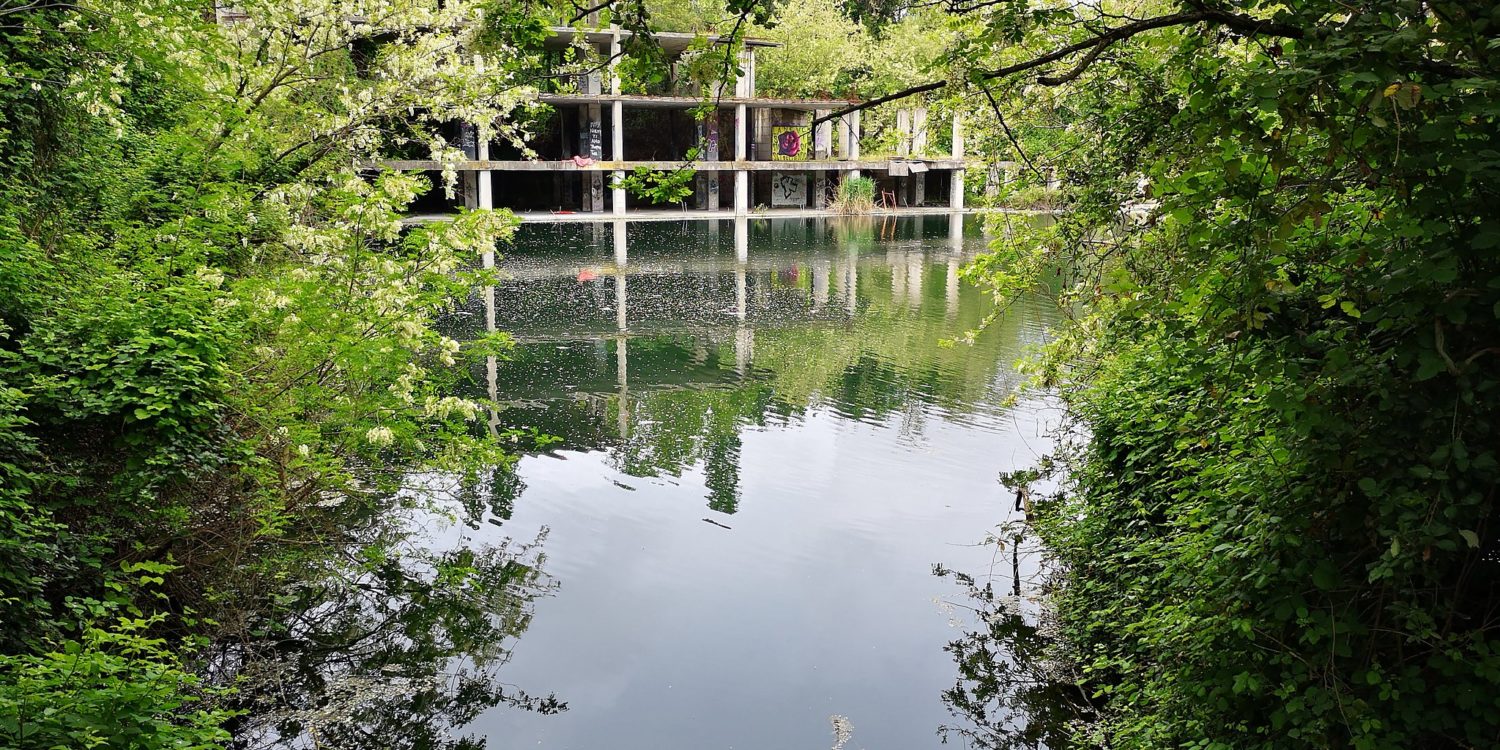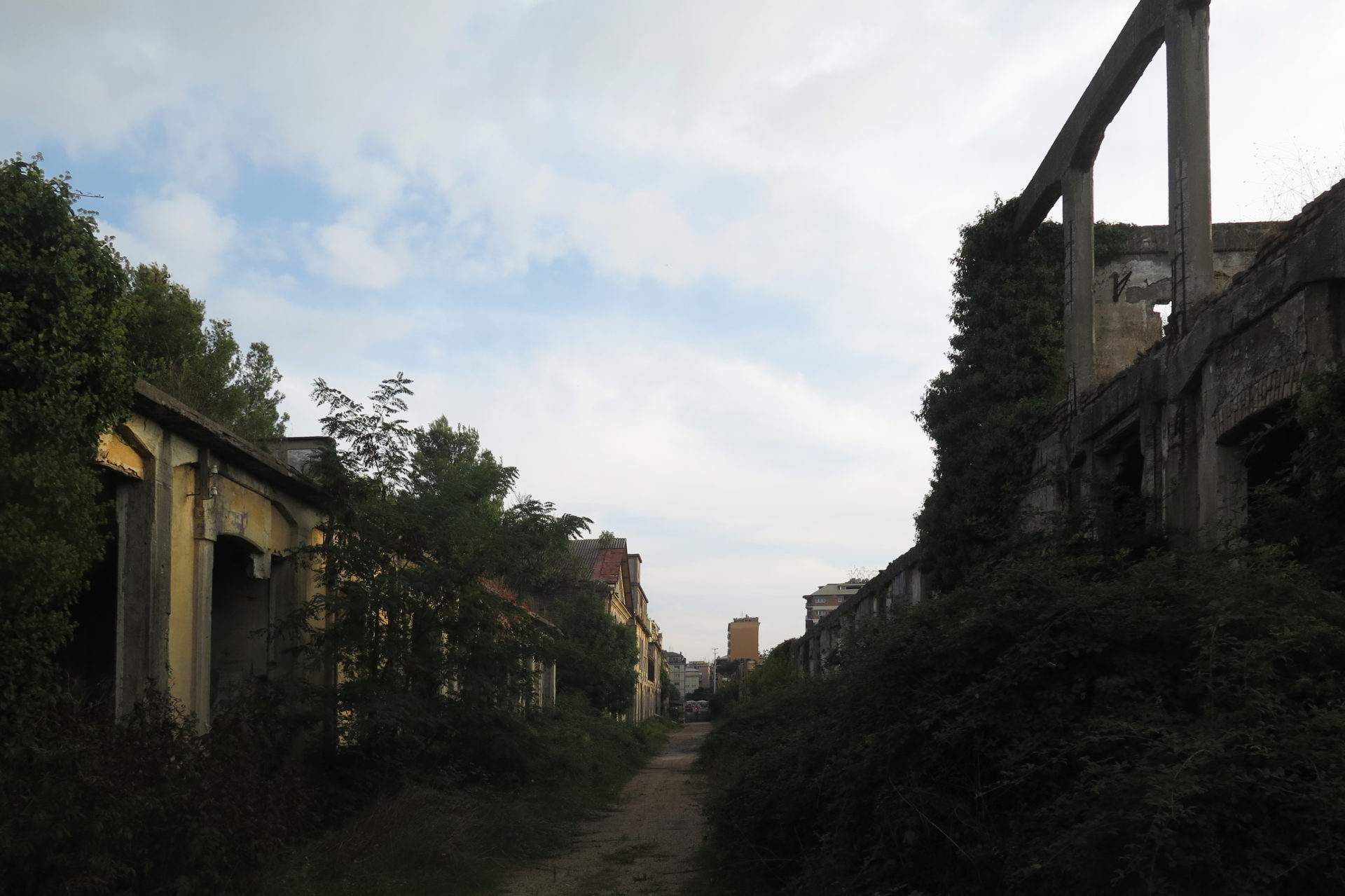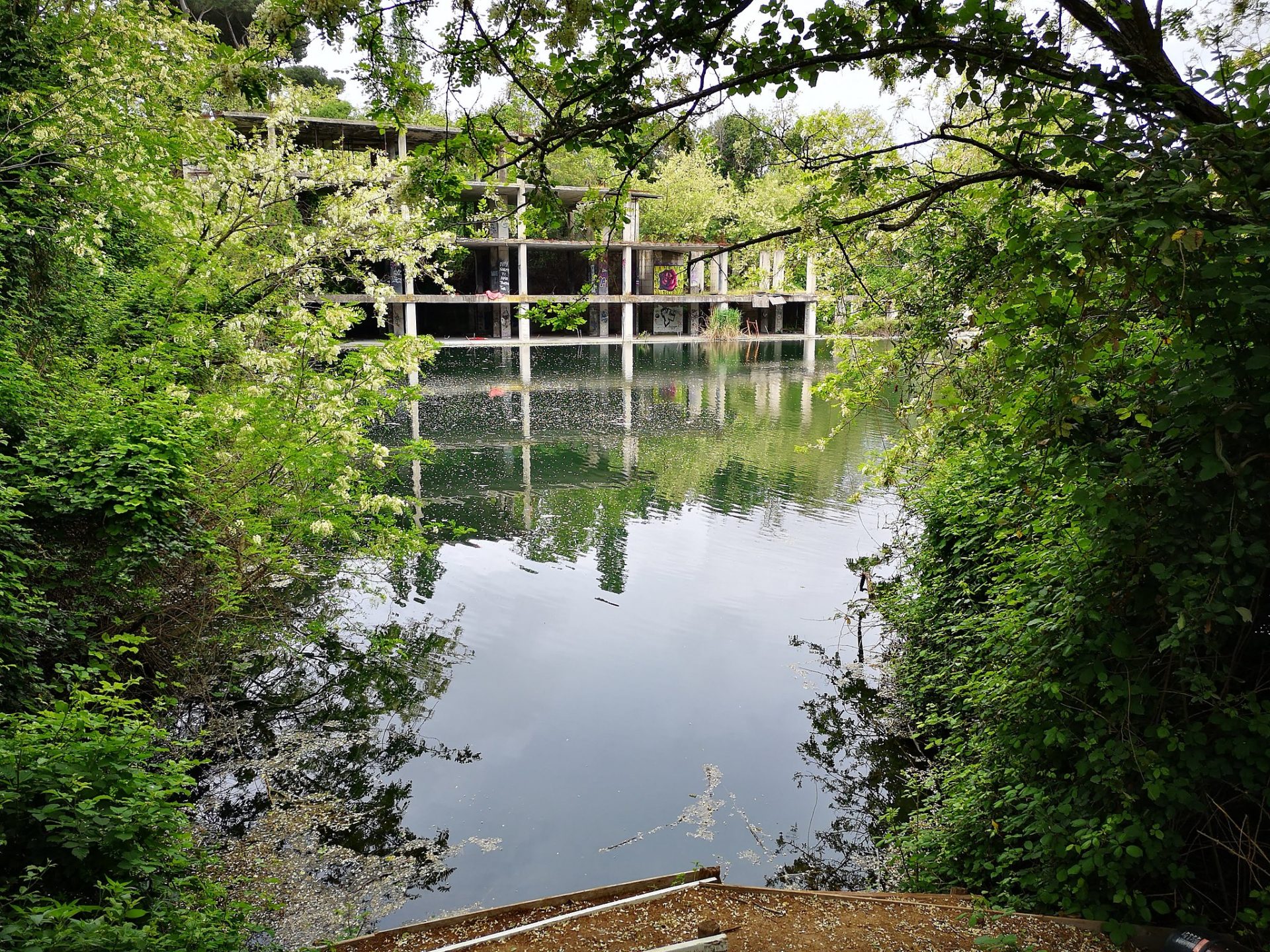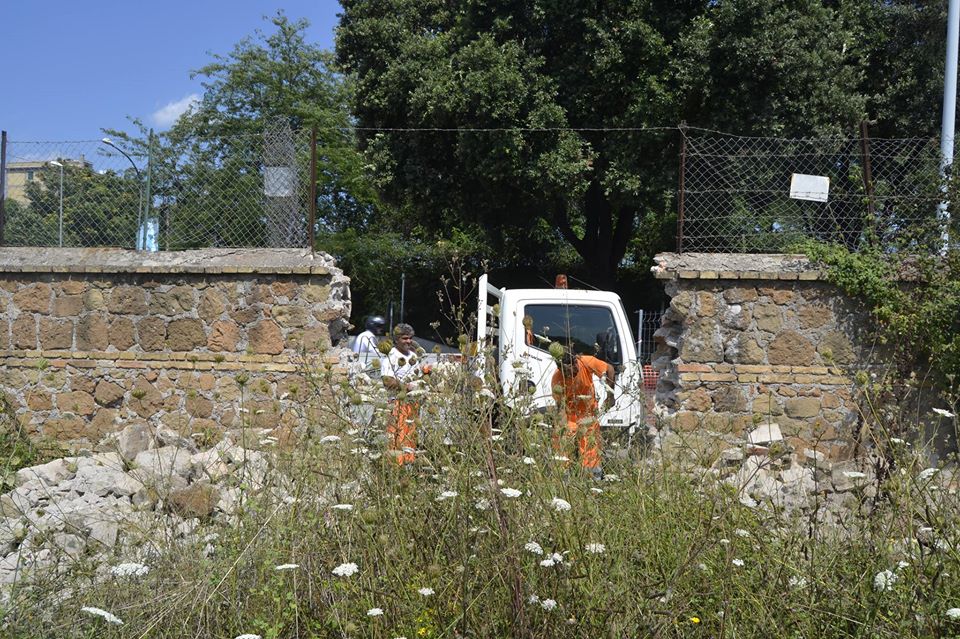While passing through the congested Via di Portonaccio — a shapeless thoroughfare typical of Rome’s patchworked urbanization — it’s easy to miss the rusty metal gate beside the railway overpass. The only opening in the 400 meter long wall lining the road, the gate is known as “Breccia di Portonaccio”, echoing the XIX-century breach in the city walls (Breccia di Porta Pia) which marked the end of papal control over the city. This grandiloquent denomination designates the entrance to the self-managed Ex-SNIA park, well known for its artificial lake.
The lake is the result of a failed real estate project. The fulcrum around which this story unfurled was a momentous, 30 year long (and still ongoing) process of Roman citizens’ self-organization and political action against urban speculation.
When a failed speculative urban transformation project inadvertently triggered coordinated response by citizens, it not only strengthened neighborhood-based social movements, it incidentally produced a lake and a park for the city. This is very typical of Rome, a city where public administration is often absent, weak and ineffective. While on one hand this facilitates predatory capitalist developments, on the other it creates space for the people’s self-organization, and construction of “differential spaces”. Differential spaces are inclusive spaces of politicised appropriation, where the right to the city is concretely articulated.
Rome’s eastern quadrant houses the lake in what is now a dense, quite central area. Here once stood the textile factory SNIA Viscosa, one of the largest in town. The factory closed down in 1954 and the site lay empty until the early 1990, when a private redevelopment — including a shopping mall among other buildings — was proposed for the area. A local citizens’ committee filed a complaint against the works, arguing they were not properly authorized. Nevertheless, construction progressed at full speed.
The fortuitous event marking the beginning of this story happened when, digging for the structure’s foundations and underground parking, construction machines hit a ground water vein. Soon, the pit was flooded and an artificial stretch of water was generated. The development firm tried to pump the water out into the drainage system, which could not cope with the influx of water. When the roads in the neighbouring Largo Preneste area got flooded, everyone realized something had happened. Only then was the construction permit withdrawn, as it turned out the cadastral maps in the application were counterfeited.
Meanwhile, part of the remaining abandoned factory complex was occupied and turned into the C.S.O.A. Ex-SNIA (CSOA stands for Centro Sociale Occupato Autogestito: occupied self-managed social centre). Born as an experiment in self-management and cultural production, as well as an outpost against speculation, the Ex-SNIA has celebrated its 30th birthday and represents one of Rome’s main occupied social centres.
However, the favorable geographic location over time continued attracting all kinds of new speculative proposals. After the Ministry of Culture declared the whole area “of archeological interest”, local authorities expropriated a hilly area within the factory perimeter. Rich in old pine trees, the area was protected for its landscape value, and transformed into a public park, the Parco delle Energie.
The expropriation of other plots to create a big park with University facilities progressed slowly, mired in bureaucratic quicksand and hindered by the developer’s appeals. In 2013, the Court ruled that the developer had no responsibility to demolish the unfinished mall skeleton. The structure still stands, its feet plunged into water.

The lake and its surroundings in 2015.
Bruno, FLICKR
Meanwhile, neighbourhood-based citizens’ movements coalesced around the lake, eventually forming a “Territorial Forum”, aiming to protect the park and pressure the administration. These movements, rooted in the neighbourhood’s working-class background, explicitly linked the former use of this land to the current post-industrial phase. Where there was once labour exploited in the factory, speculative development plans had now enabled investors to extract value from the land which, according to the movements, belonged to the local collectivity instead. A local WWF branch also opened, addressing the issue from an environmentalist perspective.
In 2004 the expropriation of a large part of the site (including the lake) started. However, for a decade the Municipality didn’t intervene in the area. In 2008, the Municipality proposed a plan for a swimming pool with recreational facilities, built and managed by private companies. This covert, municipality-backed speculation attempt was blocked thanks to the mobilization triggered by the local committees and the Forum: they organized demonstrations and spread details of the project, until then kept secret by the administration. They also staged a protest in which they carried an inflatable swimming pool into Municipal offices. Then a project to build student dormitories (to be developed by privates and rented out at an “agreed upon rate”) was proposed. Considered another covert speculation attempt, the project was withdrawn following local opposition.
In 2013 the developers who still owned part of the area answered to a public call to regenerate so-called “urban wrecks”. The project, including four 106m-tall residential skyscrapers, caused an uproar. The mobilization against this umpteenth speculative project was wide, again led and sustained by local committees: the C.S.O.A. Ex-SNIA and the Forum. It also included a rap song, Il lago che combatte (translated to “The fighting lake”). Referring to the lake as “a miracle in the marvelous metropolis”, the song (and its accompanying video) popularized the issue across Rome and beyond. As the protest grew with incursions in the factory perimeter and lakeshore demonstrations, the developer excavated the flank of the pine trees park, where access to the lake was easier, creating a dangerous cliff. Due to a change of Mayor that year (from right wing to left), the housing project was shelved.
However, the lake and its park were not yet safe. According to Italian law, when the State expropriates private property “for the common good”, that property should be effectively employed for such purpose within ten years. If this doesn’t happen, the prior owner can reclaim it. Since the 2004 expropriation, the Municipality hadn’t intervened at all on the site, despite pressure from citizens’ committees. Just days before the ten year deadline, protests and campaigns staged by the committees induced the District Municipality to send workers to open a breach in the factory perimetral wall, creating a “public access gate” to the park. Hence, the “Breccia di Portonaccio”. Besides responding to a practical need — as the access from the pine trees park had been vengefully destroyed by the developer — the “Breccia” represented a major advancement for the movement.
Since then, the Municipality hasn’t done much other than to realise a “House of the Park”, hosting a self-run documentation centre, together with a multifunctional open space, also used by the C.S.O.A. The Municipality allowed the Forum to run the park with the work of neighbourhood-based volunteers. The Forum is advocating for the categorization of the lake as a “Natural Monument” on the ground that it has spontaneously developed a wild ecosystem including three “EU priority habitats” (ecosystems worthy of protection — according to the EU). The legislative procedure to safeguard the lake eventually started in late 2019, but it excludes the crumbling factory area which is still in private hands. The Forum recently organized a flashmob in which protesters dressed up as bees invaded the factory area just as bees do, highlighting the environmental unity of the site, and calling for inclusion of the factory area within the “Natural Monument” perimeter. In addition to that, they are appealing to the Municipality to make the park safe according to standards. According to microbiological tests, the water of the lake is clean enough for people to bathe.
The neighbourhood committee, the Forum and the C.S.O.A. Ex-Snia also set up a network, No Cemento a Roma Est (No Concrete in East Rome) to monitor urban developments in the area and intervene in cases of land speculation. This coalition is also vigilant about how the effects of the ongoing gentrification of the neighbourhood, today one of the hippest in the city, may negatively impact the natural park.
This review tells only the major stages of a complex story of citizens’ mobilization, legal cases in the sclerotic Italian bureaucracy, and various attempts at speculative urban development backed by different coalitions of actors. A key aspect of the story is the ambivalent role of the state — in this case embodied mainly by local authorities – with its muddled law systems, opaque mechanisms, and complicit passivity. The spark which ignited the whole episode was the accidental hitting of the water vein, but only the incredible slowness of urban transformation in Rome, and the decades of inaction by the Municipality, have allowed the lake to transform into a wild ecosystem.
Stalker — a collective of architects and researchers active in Rome — recently described the process as an example of negentropy: the non-linear action of nature responding to human-produced (urban) chaos. This accidental green area developed spontaneously within one of Italy’s densest urban areas, and Rome’s least green neighbourhood. A group of environmental researchers pointed at the Ex-SNIA lake as “a serendipitous example of unintended restoration where no financial resources have been used”, specifying that environmental restoration projects are usually lengthy, difficult to plan, and expensive to carry out, whilst available funds are generally limited.
The Municipality definitely didn’t act as the “protector of the public good”. Neither did it manage to effectively support private developers in their value-extraction effort. Because of its porous nature, weak stance, and inconsistent action (changing with shifts in power under different mayors) the Municipality became an ambivalent actor between the private sector and the citizenry, exposing its own internal contradictions. Thanks to the collusion and nonfeasance (sometimes even the overt support) of the public administration, the private sector was able to repeatedly advance its projects on the area. Despite this, it was the non-effectiveness of the Municipality, as well as the action of other State bodies (such as the Region, or the Ministry of Culture) which enabled citizens’ groups to make considerable gains, even forcing the state to enforce its own laws. Currently the Municipality allows local committees to self-run the green area, while themselves refraining from — or lacking the capacity — to take over the lake, upgrade it, and run it as a proper public park.
Arguably, in any other major European capital, such a vast plot of land in a central, well-serviced position would by now have been developed. For such an area to be partly abandoned would, for sure, be considered as a failure by the promoters of entrepreneurial urban governance. However, the positive aspect of this narrative is that a citizen mobilization emerged around an urban transformation project, not only in opposition to it, but as a concrete alternative proposal: managing over the years to build new locally-based groups and “institutions”, and strengthening existing groups whose action goes beyond the limits of the lake. Examples of these groups and institutions include the C.S.O.A., the neighbourhood committee, the WWF committee, and the Forum.
Against the backdrop of a southern-European metropolis (replete with weak governance, informal and opaque planning dynamics, chronic austerity politics and corrupt property-led development), the Snia lake tells us a story in which action counts as much as inaction. Or, rather, wherein systemic inefficiency and the complicit passivity of authority opened the way for unplanned forms of intervention, unexpected opportunities, and positive outcomes. Eventually, the well-known problems of the Eternal City allowed the lake to morph into a wild ecosystem, a symbolic urban asset in citizens’ hands, and a catalyst for broader urban alliances and struggles.







